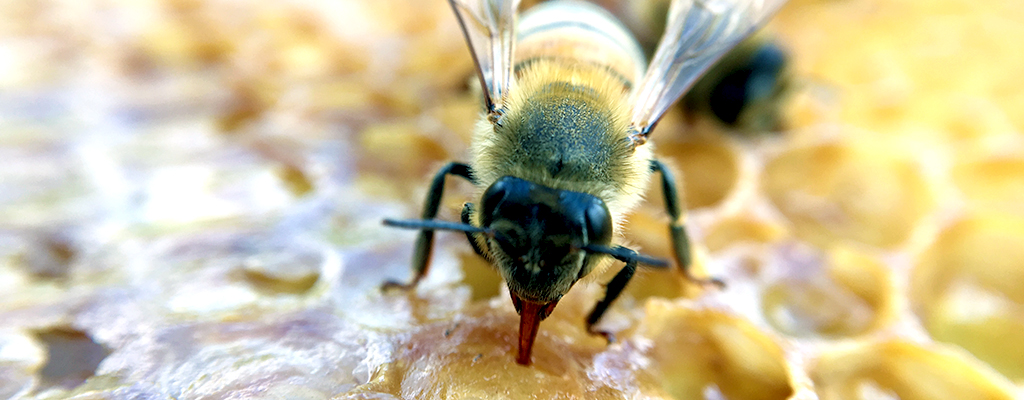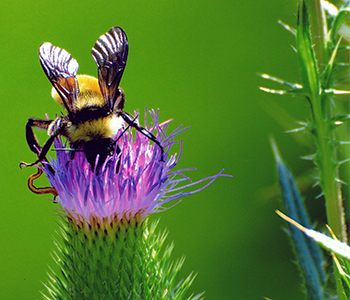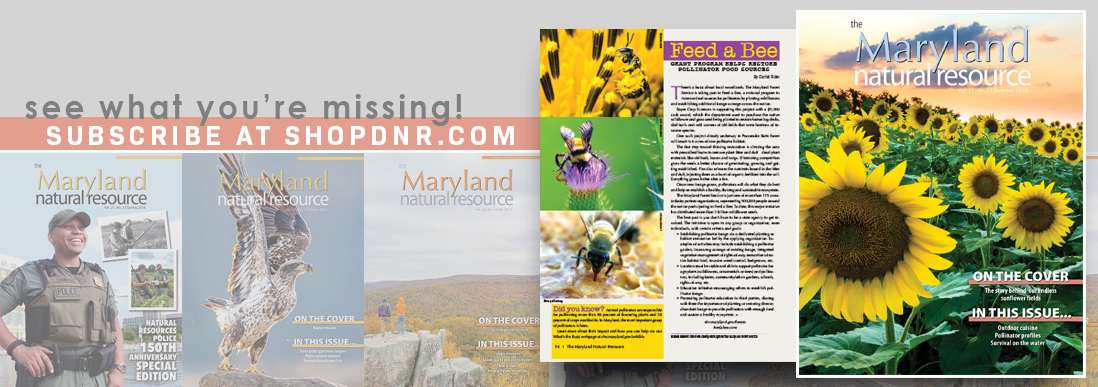Feed a Bee: Grant program helps restore pollinator food sources

by Cecilia Wright
There’s a buzz about local woodlands. The Maryland Forest Service is taking part in Feed a Bee, a national program to increase food sources for pollinators by planting wildflowers and establishing additional forage acreage across the nation.
Bayer Crop Sciences is supporting this project with a $5,000 cash award, which the department used to purchase the native wildflower and grass seed being planted to restore former log decks, skid trails and odd corners of old fields that were bastions of invasive species.
One such project already underway in Pocomoke State Forest will result in 6 acres of new pollinator habitat.

by Lori R. Bramble
The first step toward thriving restoration is clearing the area with prescribed burns to remove plant litter and duff—dead plant materials like old bark, leaves and twigs. Eliminating competition gives the seeds a better chance of germinating, growing and getting established. Fire also releases the nutrients bound in the litter and duff, injecting them as a burst of organic fertilizer into the soil. Everything grows better after a fire.
Once new forage grows, pollinators will do what they do best and help re-establish a healthy, thriving and sustainable ecosystem.
The Maryland Forest Service is just one of more than 115 cross-industry partner organizations, representing 900,000 people around the nation participating in Feed a Bee. To date, this major initiative has distributed more than 3 billion wildflower seeds.
The best part is you don’t have to be a state agency to get involved. The initiative is open to any group or organization, even individuals, with certain criteria and goals:
- Establishing pollinator forage via a dedicated planting or habitat restoration led by the applying organization. Examples of activities may include establishing a pollinator garden, increasing acreage of existing forage, integrated vegetation management of rights-of-way, restoration of native habitat land, invasive weed control, hedgerows, etc.
- Location must be viable and able to support pollinator forage plants (wildflowers, ornamentals or trees) and pollinators, including farms, community/urban gardens, schools, rights-of-way, etc.
- Education initiative encouraging others to establish pollinator forage.
- Promoting pollinator education to third parties, sharing with them the importance of planting or restoring diverse, abundant forage to provide pollinators with enough food and sustain a healthy ecosystem.
|
Did you know? Animal pollinators are responsible for pollinating more than 80 percent of flowering plants and 30 percent of crops worldwide. In Maryland, the most important group of pollinators is bees. Learn more about their impact and how you can help via our What’s the Buzz webpage. |
Article by Daniel Rider—Forest Service stewardship manager. Appears in Vol. 21, No. 3 of the Maryland Natural Resource magazine, summer 2018.


 1-888-373-7888
1-888-373-7888 233733
233733